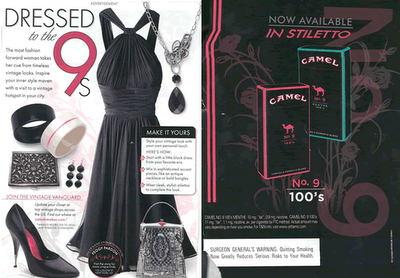When it comes to marketing a product, firms want to come to up with the latest campaign that appeals most to their target market. But to what extent of freedom should firms be allowed, before their marketing efforts may have negative repercussions? Rachel, from the AdvertisInc blog squad shed some light on this very important (but often ignored) topic in her latest post: “Say NO to Smoking”. She highlights the new campaign run by Camel to target adolescent girls and young women with their trendy No.9 Cigarettes ads, placed in popular girl’s magazines. By riding on the elegant brand of Chanel’s No.5 perfume, Camel is attempting to associate their Cigarettes with the image of sophistication and femininity, what every trendy teenage girl strives to achieve.
Should Camel be allowed to influence young girls in such a manner? I certainly don’t think so. Although they may not be violating any government regulations with this sort of advertisement, the question of ethics comes to many people’s minds.
Another company who has gotten a lot of buzz from the media on the ethical concerns of their campaign was Groupon, one of the fastest growing companies in North America. They spent millions of dollars to secure a spot during the Superbowl, only to stir up anger in many viewers and minimal return on their investment. Their “Save the Money” campaign was an attempt at making a light joke with some serious world issues, but the audience didn’t find the punch line funny at all. Take a look at the ads below and decide for yourself:


As firms recognize the increasing importance of marketing, marketers are pushed to come up with more innovative campaigns. However, where is the line drawn between being creative and being just plain offensive?

One reply on “How Far is Too Far?”
Good post, Briana. These are good examples of marketers social responsibilities. Unfortunately, there are shareholders that also must be attended to and firms have competing interests. Have you ever seen the movie “Thank You For Smoking” ? Very interesting perspective on selling sin products. Makes you think about the choices that consumers can make.
E